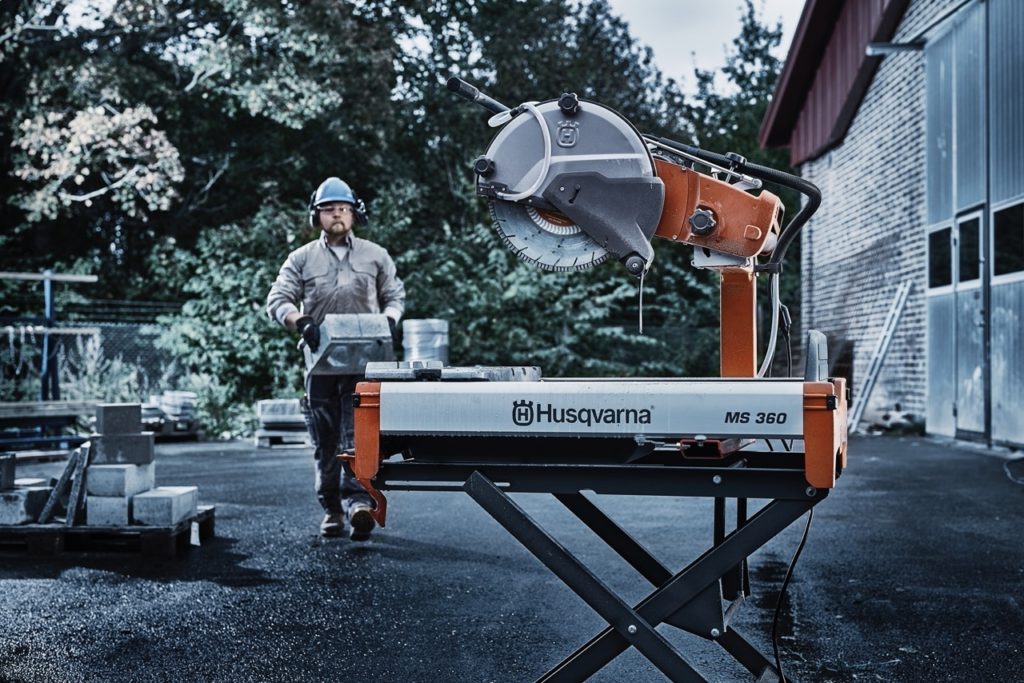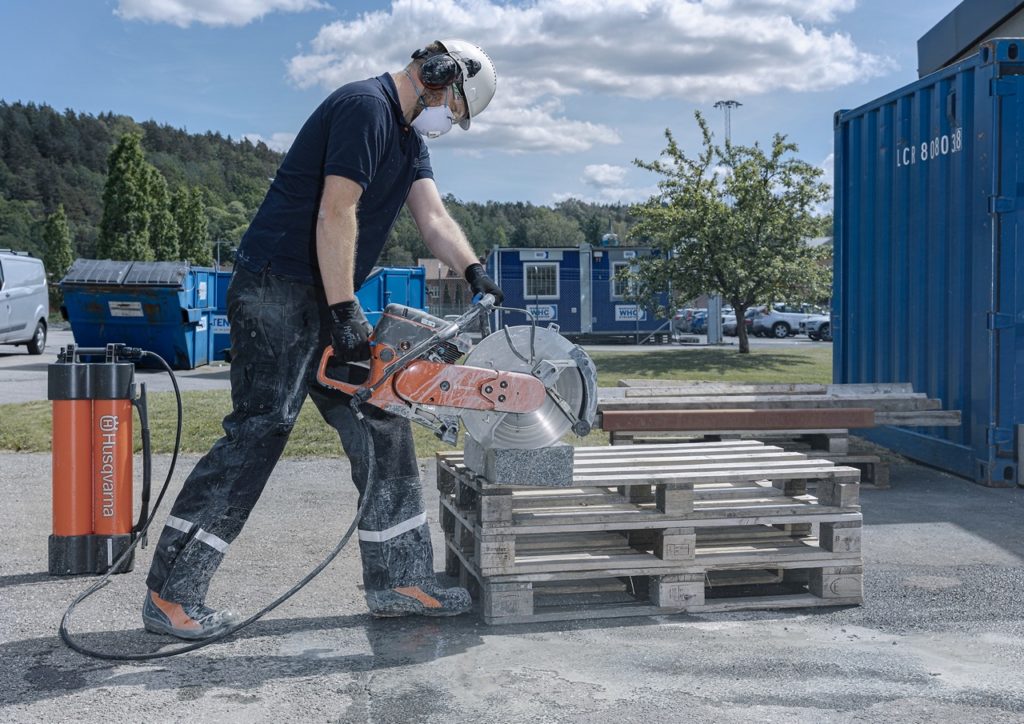Safety Factors When Cutting Masonry
Words: Lloyd Scheliha
Words and Photos: Husqvarna Construction
When it comes to masonry, there are steps the operator can take to create a safer way of working. Selecting the right tools for the job – from the right diamond blade and saw to dust suppression and PPE to help the operator safely complete the task. In this article, we’ll explore how to select the right tools to make the cut safely.
Start With The Right Cutting Blade
The first and most important factor you need is a blade that will cut through masonry stone – one that is also the correct size for your saw. Selecting the right blade for the job will help the operator work smoothly and efficiently without delays. When cutting for masonry, a diamond blade is the best option. The design of the diamond blade consists of a steel core equipped with segments that contain industrial diamonds. These diamonds grind through masonry materials, providing a cleaner and more precise cut.
After you’ve selected the right blade, it is just as important to check the blade’s condition before cutting. Using the wrong type of cutting blade, a worn-out or damaged one, increases the risk of accidents. Scrap the blade if you detect any damage.
How To Select The Right Diamond Blade
When choosing the right diamond blade, there are many factors to consider:
- What material are you cutting?
- What power cutter or table saw do you plan to use?
- How deep do you need to cut?
- Are the cuts wet or dry?
Taking all factors into consideration when selecting the right diamond blade for the job impacts the operator experience and work environment.
After a blade has been used, it needs to be inspected daily. Blades get bumped around and could crack over time. Make it a best practice to check the wear and tear of your diamond blade daily, before and after use.

Selecting The Right Saw
When cutting pavers, bricks or other masonry stone, it is important to factor in the amount of horsepower needed to complete the cut. Using the right amount of power for the job will prevent crooked cuts and premature blade wear. With a variety of power cutters and table saws on the market, consider these factors when selecting the right saw for the job:
- How many cuts will be made?
- How much power does the saw need?
- Where are you making the cuts?
Both gas-powered and battery-powered saws are recommended for masonry applications.
Gas-powered power cutters are versatile tools for cutting materials from rebar, beams and pipes to masonry up to 5 inches thick. Power cutter manufacturers have options to address kickback in different ways. One approach is to equip the power cutter with a blade break which is intended to stop the blade quickly in a kickback situation. A challenge with this approach is that the equipment needs to be within factory-recommended tolerances to work properly.
Another approach is to create a barrier between the barrier between the blade and the operator. “Husqvarna Construction developed the SmartGuard system to help reduce the possibility of contact between the blade and the operator in a kickback situation. This same system aids the operator in achieving a safer cut by guiding the power cutter in the correct cutting zone.” Lloyd von Scheliha, Product Manager for Power Cutters, Husqvarna Construction North America.

Battery-powered power cutters offer an alternative approach to kickback protection. Because battery-powered cutters are driven by an electric motor, the blade break functionality is done electronically versus a mechanical stop. Lloyd von Scheliha states, “X-halt is a system designed by Husqvarna Construction to stop blade rotation in the instance of a kickback. The electric motor senses a sudden change in the blade’s speed and responds by stopping the blade in a fraction of a second. By controlling this electronically, we reduce the mechanical components necessary – eliminating one less maintenance step to resume cutting.” While not all battery-powered power cutters have this safety feature, the future of power cutting will become safer with each new model.
To eliminate a kickback situation altogether, utilize a table saw. If you have multiple cuts to accomplish, table saws are a great option. As the operator, you can work efficiently with less fatigue and have more control over the cut - producing uniform cuts.
The Right Dust Suppression
It is recommended to cut brick or masonry materials with a form of dust suppression. If possible, bind the cutting dust with water – either from a hose or portable water tank connected to the power cutter or table saw. Masonry materials contain silica sand to improve structural integrity, and if inhaled, can lead to silicosis.
Operator Safety
Having the right equipment is safety step one. Knowing how to properly use and maintain your equipment is safety step two. Here are three essential steps to help the operator stay safe:
- Make sure you have the skills required. Nothing beats practical experience. In many countries, the National Work Environment Authorities require you to attend a certified training course before you operate power saws. Check the requirements in your region before starting work.
- Read the owner’s manual thoroughly. Pay attention to the warning and caution paragraphs. If you don’t have the time or patience to invest in your own health and safety, then don’t do the job. There’s no excuse for skipping this essential step. If your printed manual is missing, reach out to your manufacturer.
- Refresh what you’ve learned. Even experienced operators need to keep their knowledge up-to-date. The aim of this article is to help you practice safe cutting while on the job and compliment the knowledge you previously learned.
About The Author
Husqvarna Construction is a market leader in equipment and diamond tools for the construction and stone industries. They offer a wide range of flat saws for concrete and asphalt cutting applications. For more information, please visit https://www.husqvarnaconstruction.com